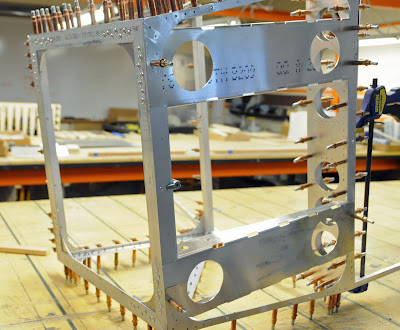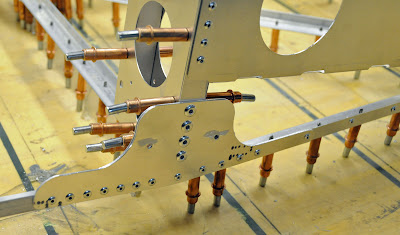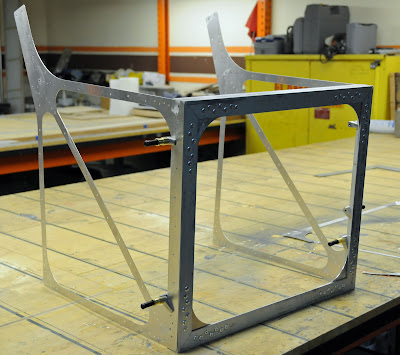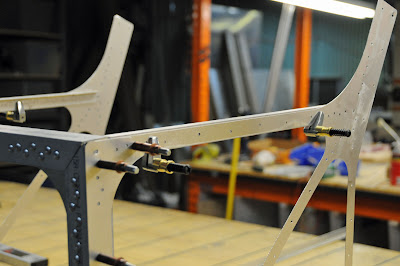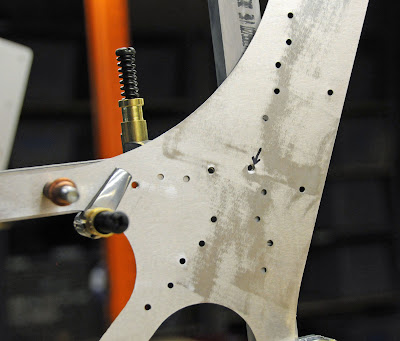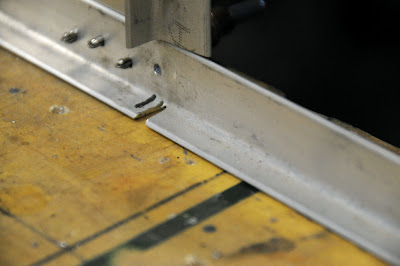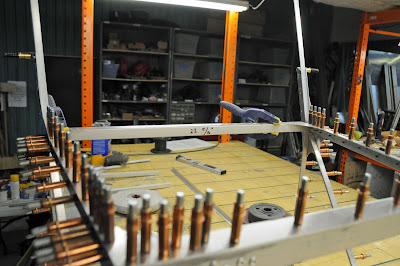Please note: James' blog has moved to a Wordpress site. To access it, please visit
http://jameswiebe.wordpress.com/. All posts have been transferred to the new site, and all new posts will only be accessible via Wordpress. Thank you for your interest!
Personal note: Thank you, Larry, for reading my blog. I did take that flight this afternoon, as I suggested I would.
Readers: Please allow this post to wonder and wander around a bit, just as I did on a cross country flight in the burgundy plane. Details on that flight are later in this post.
After I got to the airport shop this afternoon, I set to work on our production prototype of our new aluminum cab, which, when combined with a fuel efficient four stroke engine, produces the best ultralight aircraft on the planet.
There. I said it. A boast: "The Best Ultralight Aircraft in the United States".
There are seven reasons why this is so:
Engine Selection: 4 stroke aircraft engine with reliable operation and low fuel consumption
Airframe: Aluminum; easy to build, lightweight
Utility: Great short field performance; off - airport ruggedness
Flight Characteristics: When trimmed, flies hands off; turns easily.
Extras: Our carbon fiber expertise allows more strength, even lighter airframes and more options.
Covering: Our Oracal process is producing the most beautiful airplanes, with less cost and less time than all other traditional aircraft coverings.
Cross Country: I'll get to this last. I had a great time flying away from the airport, then returning as sunset was imminent.
1. Our engine selection.
We picked a 4 stroke engine built by
Hummel Engines, and as their website states, this is "reliable four stroke power", and has been in use for years in various aircraft. Our engine was ordered with all new parts, including aluminum Nicom cylinders. We also ordered the largest bore and stroke that Hummel offered, and it has quickly proven to be a perfect choice for Belite.
Although this engine is rated at 45HP, we are using it in a derated manner, by limiting RPM to about 3150 RPM. This gives us around 38HP at full throttle, which appears to be adequate to produce the maximum cruise speed legally allowed under US ultralight aircraft regulations.
This engine weighs 88 pounds, including carburetor, exhaust pipes, and dual ignition.
Christian Stratton had been working hard on fitting our Burgundy plane with a new firewall. We'd been challenged to accomodate the sharp looking opposed cylinder engine in the Belite, and to eliminate Center of Gravity (CG) issues, the engine had been placed in a manner such that the magneto was poking into the cabin. The new firewall fit beautifully; here's a photo of the revised engine installation and firewall.
 |
| 4 Stroke engine on Belite Ultralight Airplane |
And we provide some great two stroke options as well; nothing beats a Hirth F23 for raw stump pulling power.
2. Our aluminum airframe.
The fit and engineering quality on our aluminum cabin is just amazing. Weighing in at about 22 1/2 pounds, this cabin sets a new benchmark for ultralight aircraft. Pictured below is a cabin being prepared for a customer here in the state of Kansas:
 |
| Aluminum cabin assembly for Belite ultralight airplane, with Oracal covering |
Let's take one peek inside this cabin, and look at the box construction along with the fit of everything. The in flight storage compartments are on the lower left side:
 |
| Aluminum cabin for Belite ultralight airplane |
3. Belite has utility on and off airport.
When equipped with spring gear and appropriate tires, I've had no end of fun landing Belites in the neighboring uphill hayfield. Great fun! Caution -- good results require great skill.
 |
| Hayfield landing in Belite Ultralight Aircraft |
I did a fun post on this topic. Read the
Hayfield Post Here.
4. Flight Characteristics.
The new UltraCub is flying by stick control only (
see the video demonstrating this here.) Alternatively, on my flight earlier today, I kept my hands off the stick and bumped the plane around using rudder pedals. Take your pick.
5. Extras.
I've enjoyed engineering some other options into the Belite. Our carbon fiber spars are stronger and a great choice for customers who want less weight and more wing strength. I'm working on some more options for the future; here's an example of a prototype Stabilator rib.
 |
| prototype Carbon Fiber rib for stabilator on Belite Ultralight Aircraft. |
The pictured rib weighs about 2.1 ounces.
There's lots of other extras, but I won't belabor the point. Read more about our airplanes on this blog or on our
Belite website.
6. Our covering process.
We're using Oracal, a vinyl covering which looks spectacular and easy to apply. We've been using it for a couple of years. Other automotive, aircraft, RV, motorcycle manufacturers use similar products for applying graphics onto pre-painted surfaces. We take it a step further, and cover the entire airplane with it.
7. Cross Country?
I wonder what the possibilities are. Based on initial fuel burn analysis, fuel burn with the 4 stroke engine is running around 1.7 gph at low cruise. I've got to get that number nailed down, along with 'cruise' speed at various RPM's and fuel flows. Assuming fuel flow of 1.7gph with a 50mph speed, we've got a range of 145SM miles to dry tanks. Combined with neutral or tail winds, there is a pretty good opportunity to go a long distance, and beat land transportation in the process.
Earlier today, I took off in the burgundy Belite UltraCub and headed north, into a headwind. I decided to fly 30 minutes northbound, then turn around and head home.
Here's some photos I took along the way:
 |
| Cross country in a Belite Ultalight Airplane |
 |
| View of small town (Furley, KS) on a cold December day |
 |
| Watershed ponds shrinking in size, due to drought |
 |
| Farm house and wheat field |
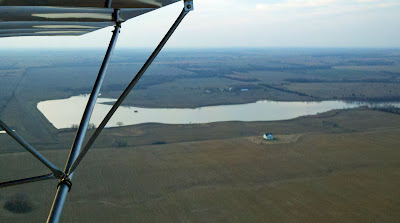 |
| Actually, this pond is doing OK. |
 |
| Harvey County east lake, photo taken from Belite Ultracub with 4 stroke engine |
I turned around and headed home. It took 30 minutes at low cruise, into the headwind, to get there. I upped the power and climbed into a nice tailwind heading home, which took 20 minutes.
I'm starting to think, again, of flying to Oshkosh next summer in a Belite Ultracub. We'll see.
Total Time in the burgundy plane to date: 3.9 hours.
The following day, I took the Belite UltraCub out to the flint hills to take hi-res photos of wild mustang horses. You can read about that
HERE (click).























